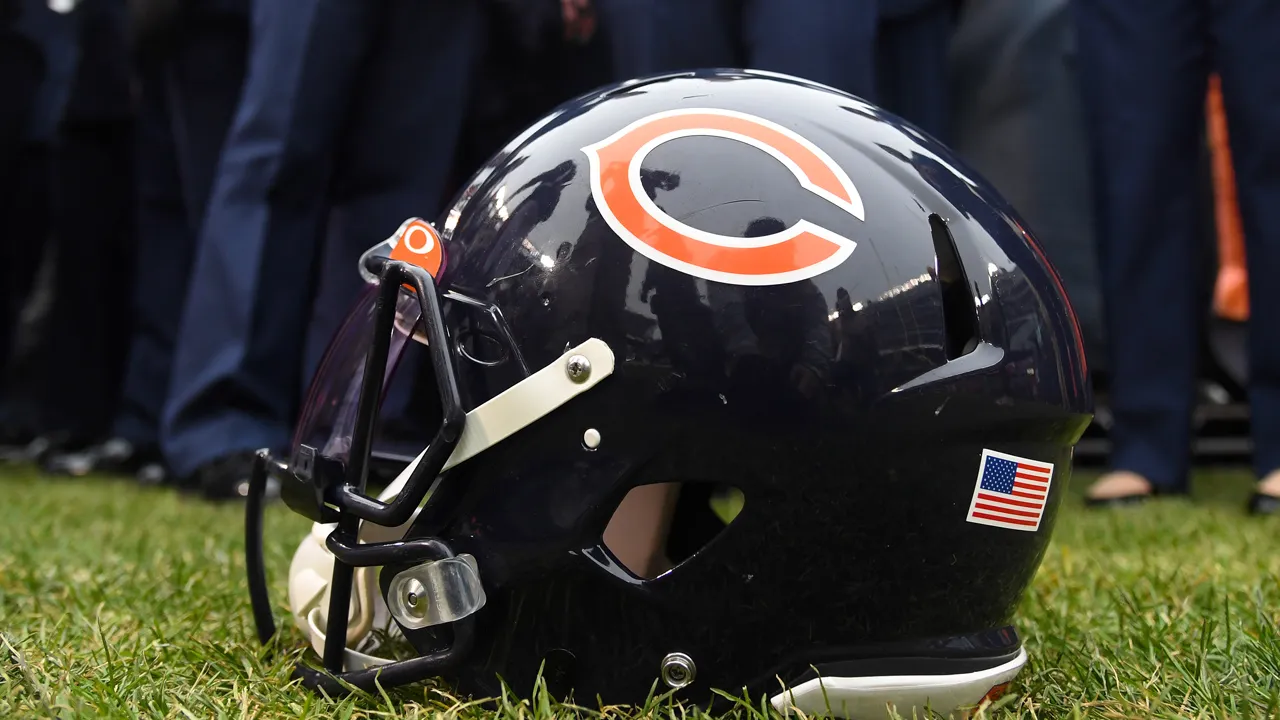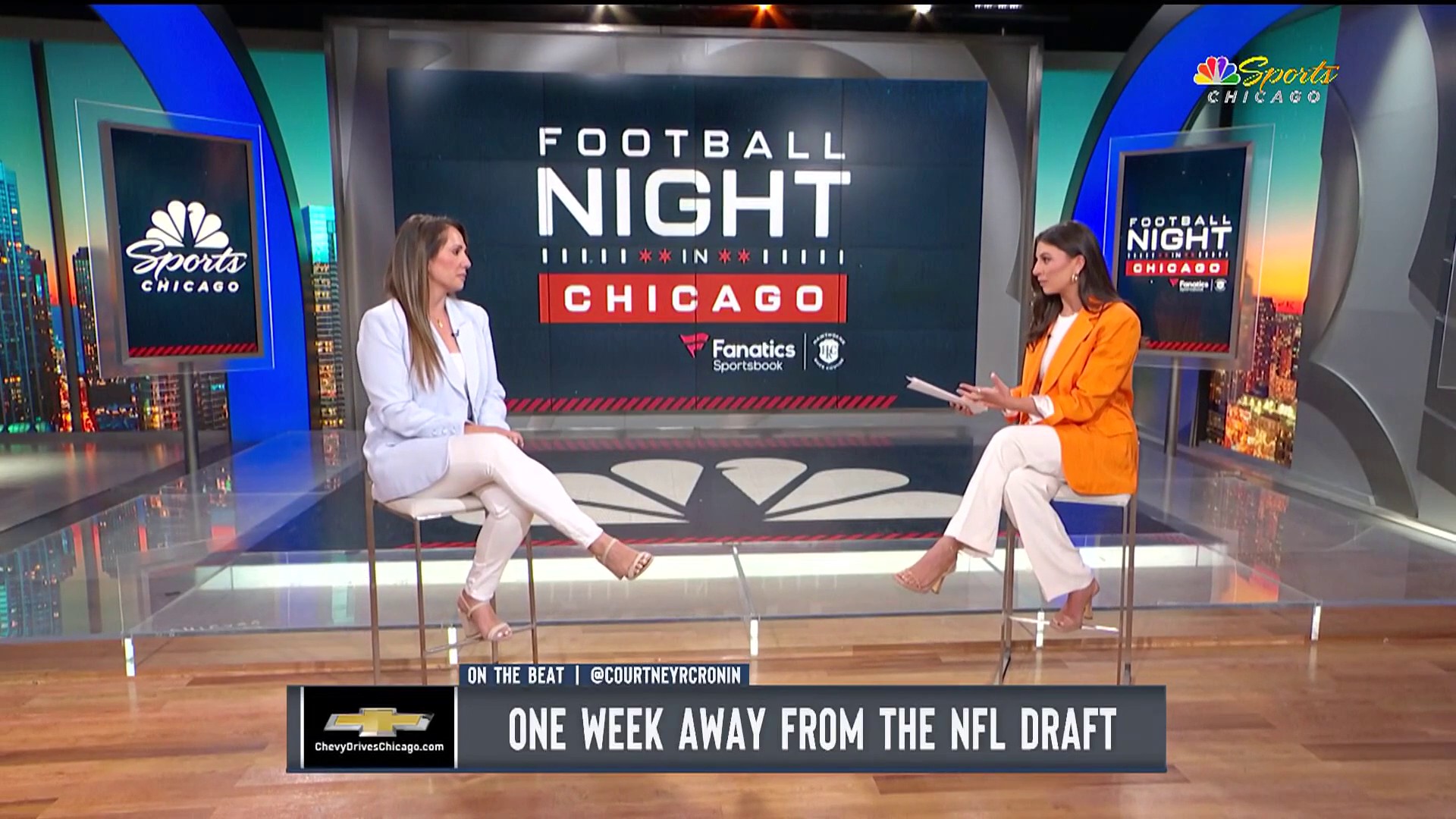As was set forth in this space earlier this week, one cannot claim to be king until and unless one decisively dethrones the old king. Whether measured by ancient axiom or Thursday’s outcome – a 10-3 home loss to the Green Bay Packers – the Bears proved unequal to the task in their first defense of their 2018 NFC North division crown.
Not all of the Bears. Just the offense, and by his own assessment, head coach Matt Nagy: “Obviously unacceptable,” Nagy said postgame, “and it starts with me.”
Maybe it will turn out to be precisely what this Bears team needed, a massive jolt that left some much-needed humility in its wake, a come-down for a team for which just about everything last year outside of a kicker went the 12-4 Bears’ way, and in which the swagger, at least on offense, was hard to understand at times.
Stay in the game with the latest updates on your beloved Chicago sports teams! Sign up here for our All Access Daily newsletter.
Last year the expectations for the offense were certainly lower if only because a new head coach was bringing in a new system. So when the Bears failed to put away the Packers despite a 20-point lead in the third quarter then, it simply served as motivation the rest of the year.
This one was different.
“Three points is ridiculous,” Nagy said, disgust evident in his tone.
But so is a team that went into draft debt for a quarterback and hired a coach from one of the NFL’s elite offensive trees, yet has now failed to top 15 points in four of its last six games.
NFL
It was a Bears team on Thursday that was penalized 10 times for 107 yards, took two delay-of-game penalties on a potential go-ahead drive in the fourth quarter because of personnel mixups, once because of wrong personnel, once because of having only 10 men on the field. The defense was flagged for 12 men on the field but the penalty was not assessed because the Packers scored their lone touchdown despite the manpower imbalance.
The last time a Bears team managed just 3 points in a game was in a 2017 loss to the eventual Super Bowl champion Philadelphia Eagles. Trubisky was the quarterback then, too, but had the excuse of laboring under the constraints of John Fox and Dowell Loggains. No such pass in this one.
Nagy dismissed any suggestion that failing to play Trubisky and the No. 1 offense more than three handoffs in preseason game No. 1 contributed to rustiness or timing issues. And his quarterback disputed any connection between a no-play preseason and a no-go opener.
“We just couldn't find a rhythm,” Trubisky said, “and I don't think it's because we didn't play in the preseason, because we were rolling in practice, and it just didn't translate the week of practice we had to the game.”
Nagy pointed to the outstanding performance of the defense, which also had the preseason off, as supporting evidence.
The trouble with that is that the defense didn’t need the preseason. It was already the NFL’s best. The offense was far from that. Nagy noted that the offense had “a great week of practice.” The trouble with that is that the offense, in fact, didn’t look particularly good in training camp when it and Trubisky were going against the No. 1 defensive unit; and as camp wound down, the No. 1 offense was going against the No. 2 defense and scout teams. If the offense didn’t look better then, the problems should be seriously concerning.
The play of Trubisky should be at least somewhat concerning in any case. Nagy defended Trubisky’s interceptions during training camp on the grounds that he and the staff wanted Trubisky to push the issue with throws into difficult situations. Trubisky appeared to have learned that methodology but perhaps not enough restraint or decision-making.
Going for a potential game-tying touchdown, Trubisky threw toward wide receiver Allen Robinson in double coverage. That resulted in an end-zone interception with just two minutes remaining in the fourth quarter. Proving that the football gods do have a sense of humor, or at least irony, the interception was by former Bears safety Adrian Amos, who went more than 2,100 snaps into his Bears career before he managed a pick. It only took him 61 to grab one as Packer.
“Didn't keep my eyes on the safety long enough,” Trubisky said, “and it looked like there was a little contact there, that maybe I should have [thrown] in a different spot.”
The Bears did get the football back once more but that final chance ended in Trubisky being sacked for the fifth time at the Chicago 5-yard line.
The Bears never achieved anything close to a sustained rhythm on offense, with penalties contributing to the unevenness. They also struggled to find any sort of balance, with Nagy calling 50 pass plays vs. 15 running plays despite the obvious problems Trubisky was having with pressure. Green Bay managed just 213 total yards of offense but ran the football 22 times vs. 35 pass plays.
‘This is a test,” Nagy said. “It's a different type of loss than last year when we lost [at Green Bay] in a different way. It was a frustrating game. Couldn't get in a rhythm offensively. You know, and then when we did get in a rhythm, we'd have penalties, and we just couldn't -- field position, and that's, again, we've got to be better. I've got to be better.”
Having the Bears’ number?
More than a little credit belongs with the Packers, who picked up where the rest of the NFL appeared to be as 2018 went along, figuring out and catching onto what Nagy and his quarterback like to or even can do. Which should hardly be surprising: When Packers coach Matt LaFleur was hired, he retained defensive coordinator Mike Pettine in much the same way that Nagy kept Vic Fangio on staff.
“I give credit to Coach Pettine on defense,” Nagy said. “He's a good defensive coordinator, and he does a lot of good things and they do some things personnel-wise that they're able to do. He's always done that.”
Under Pettine last season, the Packers sacked Trubisky four times in the game-one loss at Green Bay last season, and Trubisky went without a TD pass for one of only three times all season and managed a substandard 77.2 passer rating. When the Packers sacked him just once in the teams’ second meeting, Trubisky threw for two TD’s and a rating of 120.4.
Pettine’s game plan clearly reflected a conclusion that Trubisky struggles with reads under pressure, with the result that Amos led a spectrum of blitzes that confounded Trubisky’s decision-making and caused rushed throws, several of which were closer to interceptions than completions.
“We just kept playing hard and put [Trubisky] in situations to where he had to pass the ball, and throw through people,” said defensive lineman Kenny Clark. “You either hit him, sack him, or you know, he had an incomplete pass.”
Defending Rodgers
For its part, the defense held one of history's greatest quarterback’s to just 10 points and sacked him (Aaron Rodgers) five times. But the defense failed to generate a single turnover, its 2018 signature.
The Packers amassed all of -12 yards on their first three possessions, the first two featuring third-down sacks, by Roy Robertson-Harris and then by Leonard Floyd. But successive Green Bay possessions improved to nets of -10, -7 and five yards, then for 74 yards and a touchdown on the kind of pass the Bears can only hope that Trubisky develops the ability to throw.
Rodgers bought time in the pocket, then lofted a ball toward 6-foot-7 tight end Jimmy Graham, matched up against backup safety Deon Bush. But where the ball was placed was the point: The football was where Graham could go up for it, above Bush, and short of safety Eddie Jackson, in coverage deeper in the end zone.
“I was trying to wave at [Graham] to go the other way, and then he didn't,” Rodgers said. “So I just tried to give him a ‘50-50’ ball. I'm really happy for Jimmy. Obviously, he's a guy who was much maligned last year with his role in the offense.”
Click here to download the new MyTeams App by NBC Sports! Receive comprehensive coverage of the Bears.


